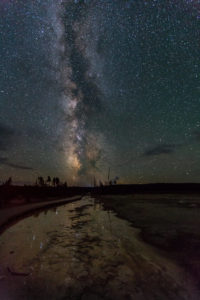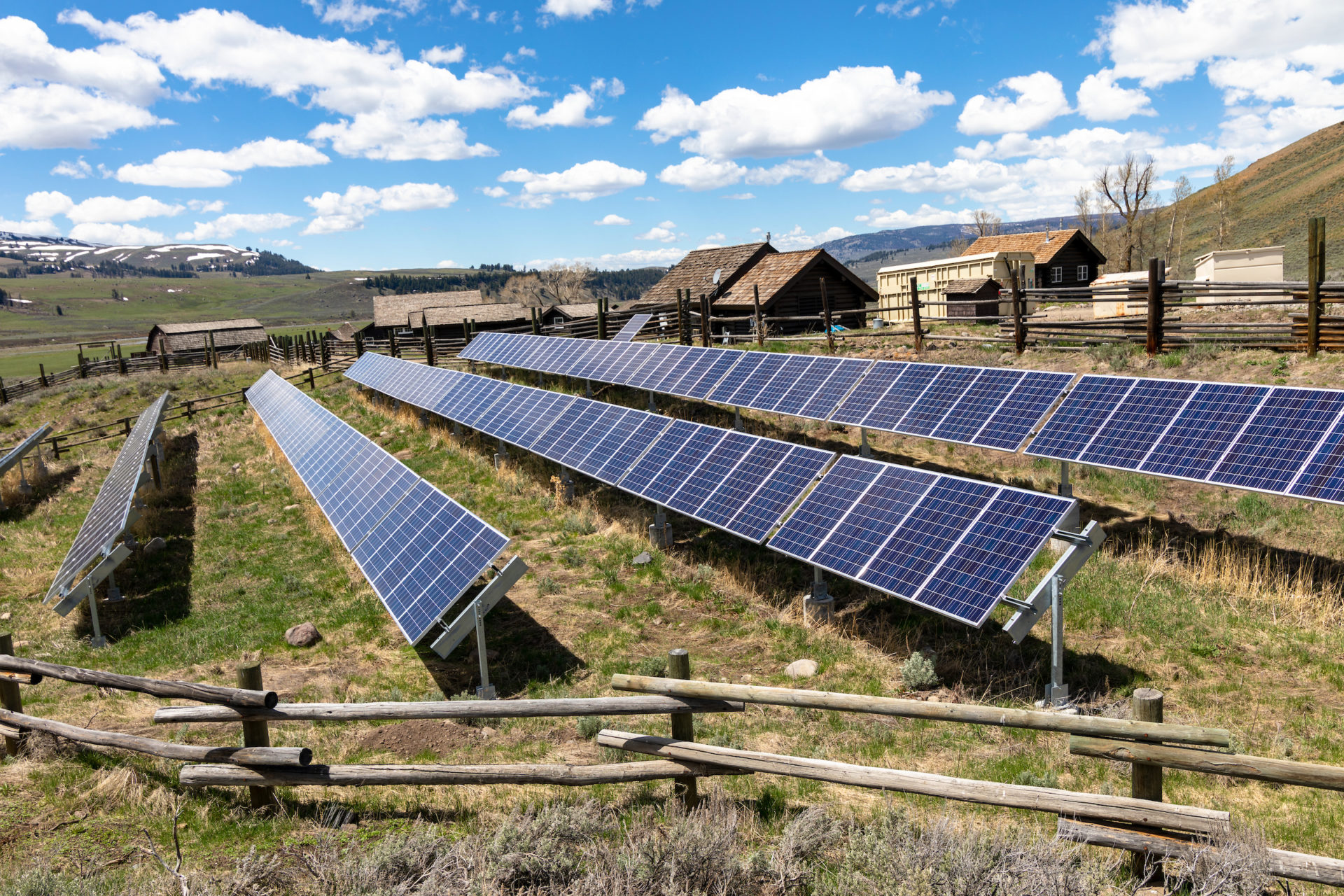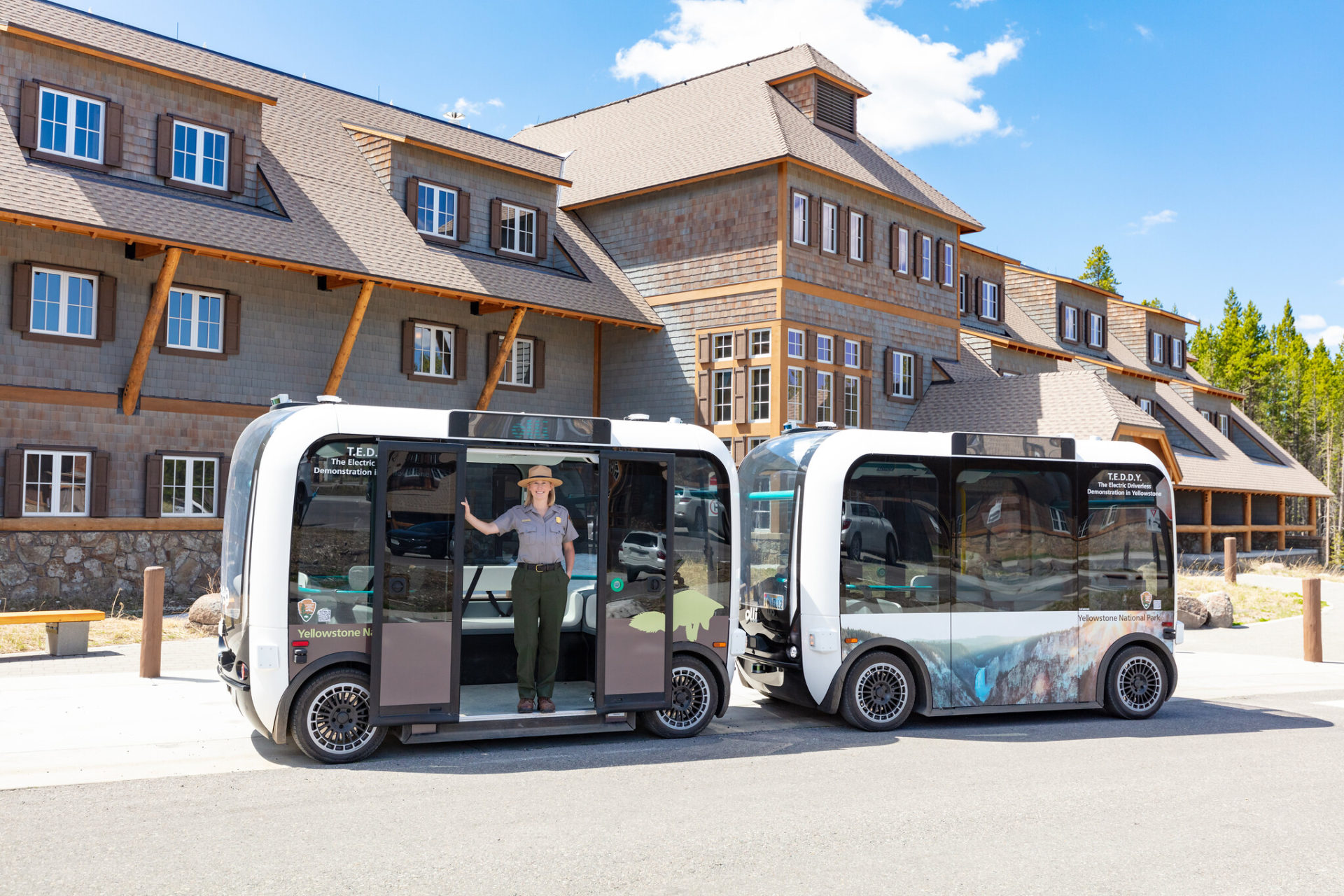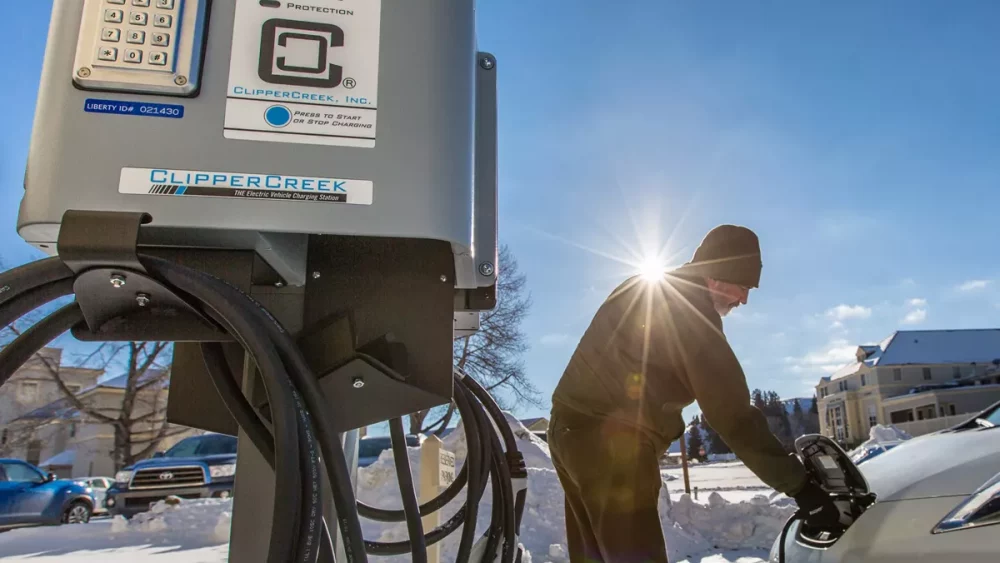One-hundred and fifty years ago on March 1, 1872, Congress designated Yellowstone as the country’s first national park, created for the “benefit and enjoyment of the people.”

Milky way at Fountain Paint Pot (Lower Geyser Basin)
NPS / Neal Herbert
A century and a half later, the people keep coming. Yellowstone remains a place where you can escape the speed of daily life to share the landscape with wildlife like bison, bears, wolves and elk. It’s a place where the land defies expectations, collecting in breathtaking colors and bubbling above the surface.
But it’s also a place that is seeing an exponential increase in visitation and the very real effects of climate change.
“Climate change, by far, is the single biggest threat to Yellowstone and its ecosystem,” Yellowstone National Park Superintendent Cam Sholly told the Billings Gazette in October 2021.
“We need to know and understand what we can control and mitigate to protect the species and the ecosystem health in this park that are under threat from climate change.”
As we look toward the park’s next 150 years and beyond, we must take action to ensure Yellowstone really is here forever. That’s why Yellowstone Forever is working with the park to fund new sustainability efforts that will support climate change mitigation efforts that conserve resources, reduce greenhouse gas emissions and protect Yellowstone’s wildlife for the benefit of this and future generations.
To kick off this work we are excited to have corporate support from Fortune Brands Home & Security, Inc., Toyota Motor North America, Inc., ConocoPhillips, as well generous individuals as Founding Partners in our sustainability efforts. Combined, they have already pledged close to $1 million to support the work to reduce impacts on the environment and implement climate change mitigation over the next three years.
Energy
Yellowstone National Park is composed of 2,221,766 acres, with over 2,000 miles of streams, more than 25 square miles of lakes, and almost 400 different animal species. But despite the park’s distinction of being one of North America’s most intact wild ecosystems, it takes a lot of energy to maintain Yellowstone.

Solar panels at the Lamar Buffalo Ranch. YF/Matt Ludin
In fact, Yellowstone National Park is the largest consumer of energy in the entire National Park Service. In 2019 alone, the park used 34,682,641 kWH (kilowatt hours) of energy. To put that into context, the average American household uses 10,715 kWH of energy each year. The energy used in Yellowstone in 2019 could provide electricity to 3,256 homes.
Yellowstone is working with companies that provide energy in the park to shift their portfolio to renewable energy sources. But to truly become a leader in sustainability in the National Park system it’s not just about updating the grid, it’s also about finding ways to use less.
As Yellowstone National Park looks to the future, it is finding ways to reduce and offset energy use, identifying new building and renovation projects that could achieve net-zero energy, and seeking out renewable energy opportunities. The park and their energy partner are also looking at the potential to develop area micro-grids that would integrate energy storage to provide system resilience.
One of the ways Yellowstone is looking to reduce energy use is through the replacement of lightbulbs in more than 25,000 light fixtures and lamps inside park buildings. Replacing the existing bulbs with LED bulbs would result in an energy saving of 1,285,000 kWH per year.
There is also potential for energy savings through the replacement of 960 outdoor light fixtures — to the tune of 360,000 kWH saved annually.
The replacement of outdoor bulbs would have the added benefit of making Yellowstone eligible to be designated as an International Dark Sky Park — a win for energy savings and natural ecosystem protection.
Water
In 2015, the World Economic Forum ranked water crises as number one in its review of global risks. As the world’s population grows and temperatures rise, conserving water will be a challenge with which we are all tasked.
Yellowstone National Park is home to some of the most pristine rivers and lakes in North America, and there is a responsibility of all who visit Yellowstone National Park to conserve our limited natural resources.
In 2019, the National Park Service used 169,519,318 gallons of water. If you include the park’s lodging and concessions companies, Xanterra and Delaware North, all operations in the park used 271,213,835 gallons. That water use is mainly from activities like flushing, washing, and drinking.
Yellowstone has made some progress in recent years by identifying leaking underground pipes, upgrading existing fixtures to low-flow options, and retrofitting sprinkler systems with smart controllers.
Many of the steps people take at home can also be applied to their time in the park. When staying in park facilities, take shorter showers—it’s supposed to be rustic! Guests can also turn off the faucet when washing up or brushing teeth, and use refillable bottles instead of single-use plastic bottles for hydration.
As for the park, a big next step is the installation of water-efficient faucet aerators. Aerators, or flow regulators, mix air into the flow of water to decrease the amount of water passing through the tap. These aerators save 30-50% more water on each faucet. By installing more of these efficient faucets and aerators, Yellowstone National Park can save millions of gallons of water.
Transportation
Almost every visitor that enters Yellowstone National Park does so in a vehicle. It seems impossible to the modern visitor that a little more than 100 years ago, in 1912, concessionaires were fighting to keep automobiles out of Yellowstone. Visitors at that time saw the park by horse-drawn carriage. Today, the millions of park visitors are largely using personal vehicles, tour buses, or private guiding services to see the park.
According to the United State Environmental Protection Agency, the typical passenger vehicle uses 4.6 metric tons of carbon dioxide a year. Carbon dioxide is the primary greenhouse gas emitted from human activity, and the large increase of carbon dioxide produced from human use substantially contributes to global warming.
As the park and its partners look toward Yellowstone’s future, they are adapting to clean transportation alternatives.
The National Park Service has more than 500 vehicles used for a variety of purposes, from maintenance to snow removal to wildlife and visitor safety operations. The park is evaluating its large fleet with the goal of transforming the size, types of vehicles, and technologies used in the fleet to increase efficiency to the extent practical and economically feasible.
In addition, the park is looking at alternative transportation options for visitors. This past summer the park piloted two automated electric shuttles at Canyon Village. These shuttles, named TEDDY or The Electric Driverless Demonstration in Yellowstone, were free, driverless transportation options that took visitors around the Canyon Village area, including the visitor center and campground.

Christina White, Outdoor Recreation Planner, and T.E.D.D.Y. NPS / Jacob W. Frank
The pilot’s goal was to collect data on how the technology could be used in national parks, and how visitors reacted to them. New technology like the TEDDY shuttles could decrease vehicle use in heavily trafficked areas.
Yellowstone National Park and Yellowstone Forever are also making it easier for visitors with energy efficient cars to visit the park.
Thanks to a program sponsored by The Yellowstone-Teton Clean Energy Coalition, there are a number of electric vehicle charging stations in and around Yellowstone. This includes a station at Yellowstone Forever’s Gardiner, Montana headquarters. These stations are free to use and take about four hours to charge from empty to full.
Moving forward together
Former United Nations Secretary General Kofi Anan said in 2001,”Our biggest challenge in this new century is to take an idea that seems abstract — sustainable development — and turn it, too, into a daily reality for all the world’s people.”
As we look to the park’s next century and beyond, we know that our decisions—both personally and financially—will play a role in what the daily reality of Yellowstone will look like for future generations.
As Yellowstone National Park’s enters this 150th year, its leaders are looking beyond the past to plan ahead for a changing climate. And as the park’s official nonprofit partner, Yellowstone Forever and its members are working in partnership to support the park’s efforts to become the leader in sustainability in the National Park Service.
Learn more about the park’s sustainability work at nps.gov/yell/getinvolved/sustainability.htm.
A version of this article appeared in the Winter 2021 Insider Magazine.

Comments are closed.